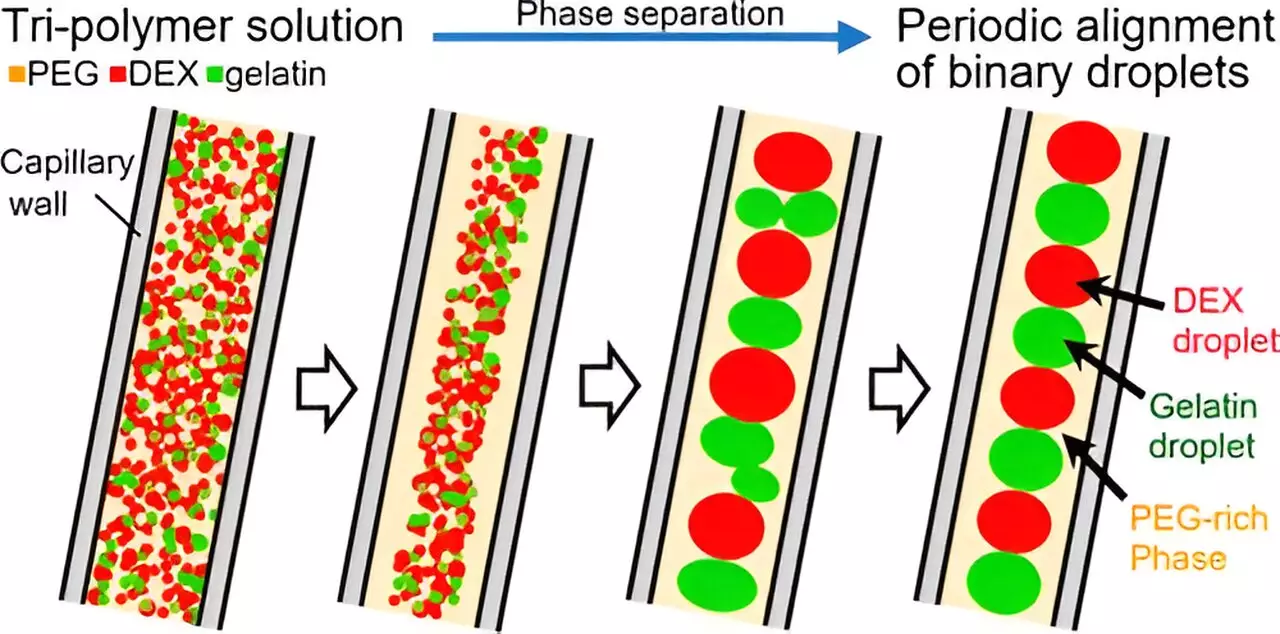Polymer systems comprised of multiple components have the ability to induce emulsion or microdroplets through mechanical mixing, representing an intermediate state of macroscopic phase separation. However, a common issue is the nonuniform size and random spatial arrangement of the generated droplets, which also tend to coarsen over time. Various attempts to prevent droplet size changes by rapidly lowering the temperature have not been successful in improving droplet uniformity.
A recent study led by Ph.D. student Mayu Shono from Doshisha University revealed a novel phenomenon in the self-organization of microdroplets. The research team found that homogeneous microdroplet spatial patterns can be spontaneously formed through phase separation of a polymer solution in a glass capillary tube. This arrangement proved to be stable for extended periods without any external material or energy exchange.
In the study, three aqueous tripolymer solutions were prepared by combining polyethylene-glycol (PEG), dextran (DEX), and gelatin in specific weight ratios. Fluorescent markers were used to distinguish the DEX and gelatin components in the solution. The solution was then drawn into PEG-coated capillary tubes, where phase separation occurred due to preferential attachment to the capillary’s surface. The DEX and gelatin droplets aligned themselves in a periodic pattern within the PEG phase.
To further understand the observed pattern, numerical simulation was conducted using the Cahn-Hilliard equation. This equation describes the time-dependent change in the spatial pattern of phase separation in a mixture of three different polymers. The stable micropatterns achieved through phase separation, which typically tend to collapse or disappear, highlight the success of the novel methodology.
The ability to generate uniform microdroplets in polymer systems opens up opportunities in various fields. These patterns can provide insights into the self-assembly of biological molecules and aid in targeted drug delivery. Additionally, the production of desired macromolecules using protocells can be enhanced by understanding and utilizing these micropatterns.
The research led by Mayu Shono and her team at Doshisha University represents a significant advancement in the field of polymer systems. The novel methodology for generating uniform microdroplets through phase separation in a glass capillary tube showcases the potential for various applications in drug delivery, synthesis cells, and understanding biological molecule self-assembly mechanisms. Further exploration of this research could lead to groundbreaking developments in the field of polymer science.



Leave a Reply